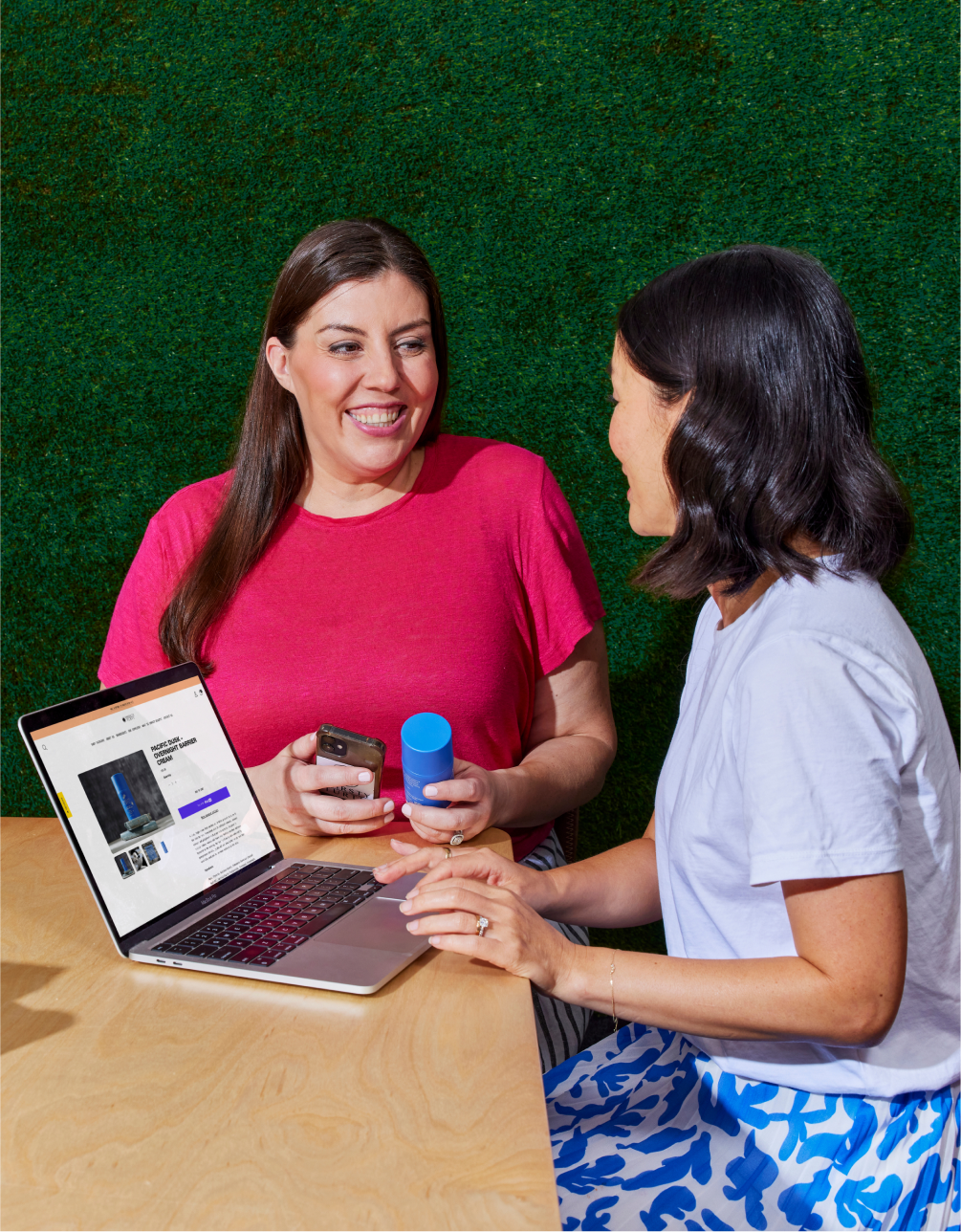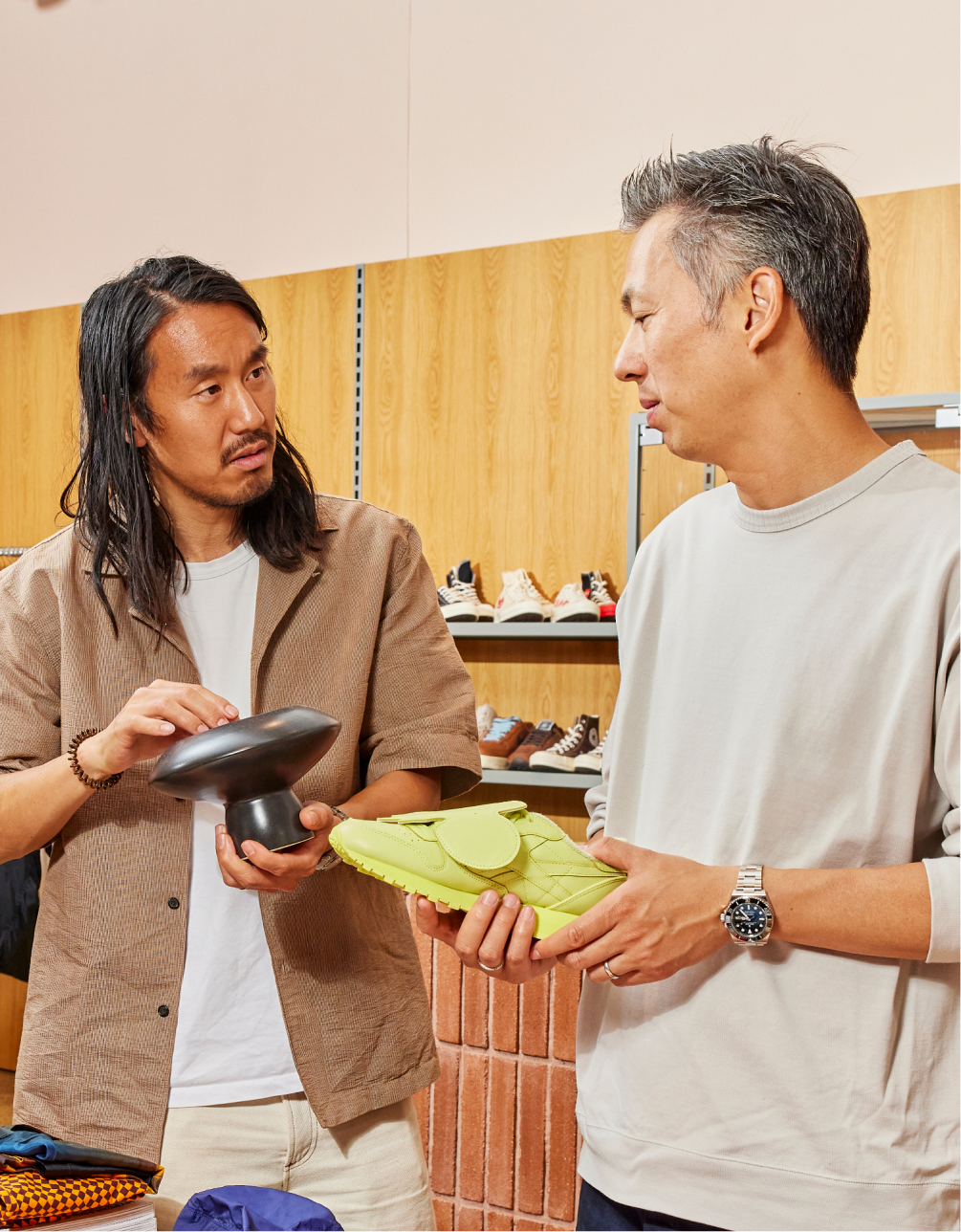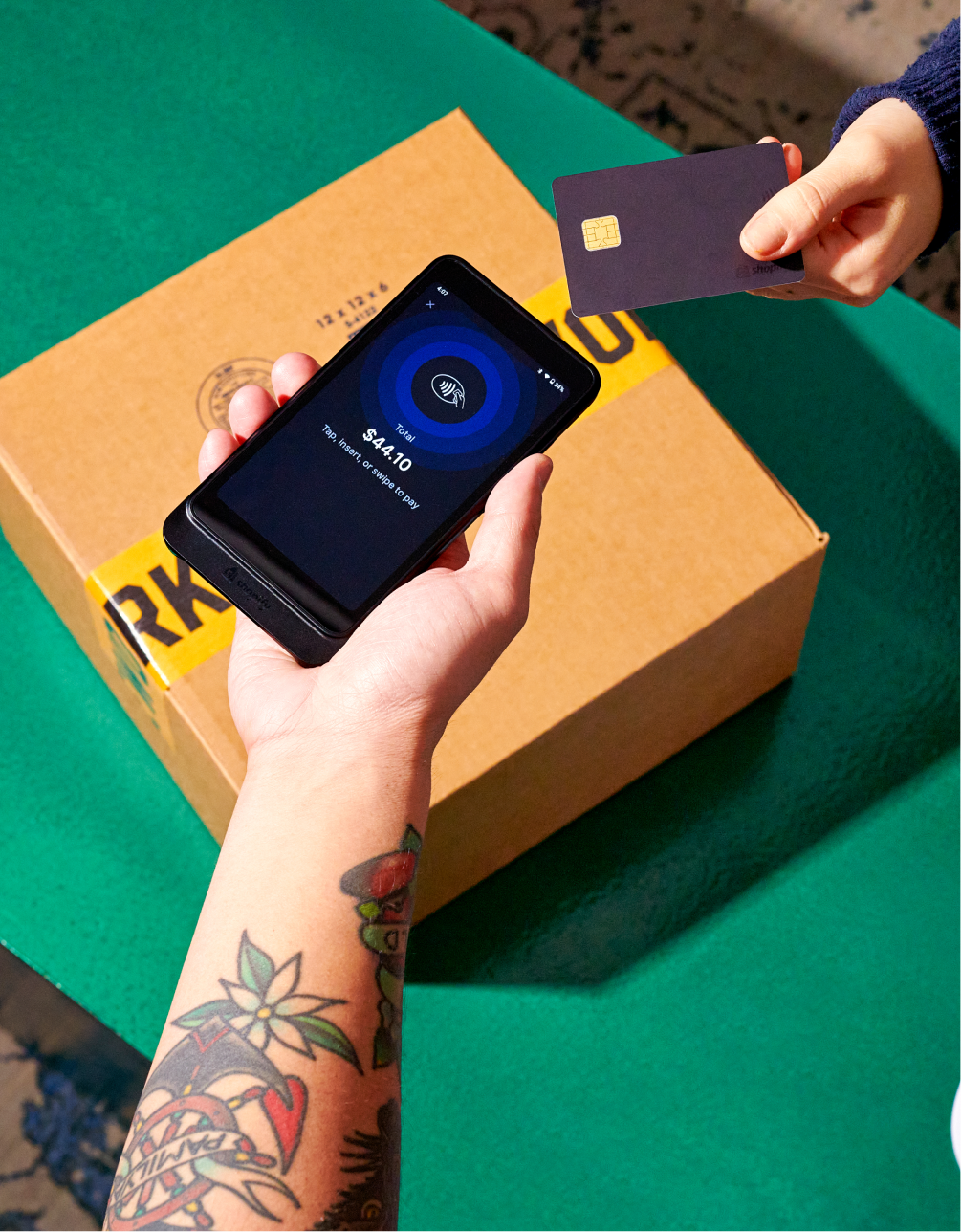Health and wellness has been digitized. And that includes not only how consumers take care of themselves, but how businesses take care of their customers.
It’s no wonder the global wellness industry is forecasted to reach $6.51 trillion by 2024.
In this uber-competitive marketplace, what can your health and wellness ecommerce business do to stand out from the crowd?
To help answer this question, we reviewed some of the best health and wellness brands to see how they are serving customers above and beyond their products in this multitrillion-dollar market.
Health and wellness ecommerce examples
1. Hubble
Buying contact lenses online is a tough sell—they are your eyes after all. So how can an ecommerce shop convince customers to spend tens of millions of dollars in less than one year?
To meet that challenge of building trust and making the ordering process convenient, Hubble created a doctor-validated product that allows new customers to get a vision test online, for free.
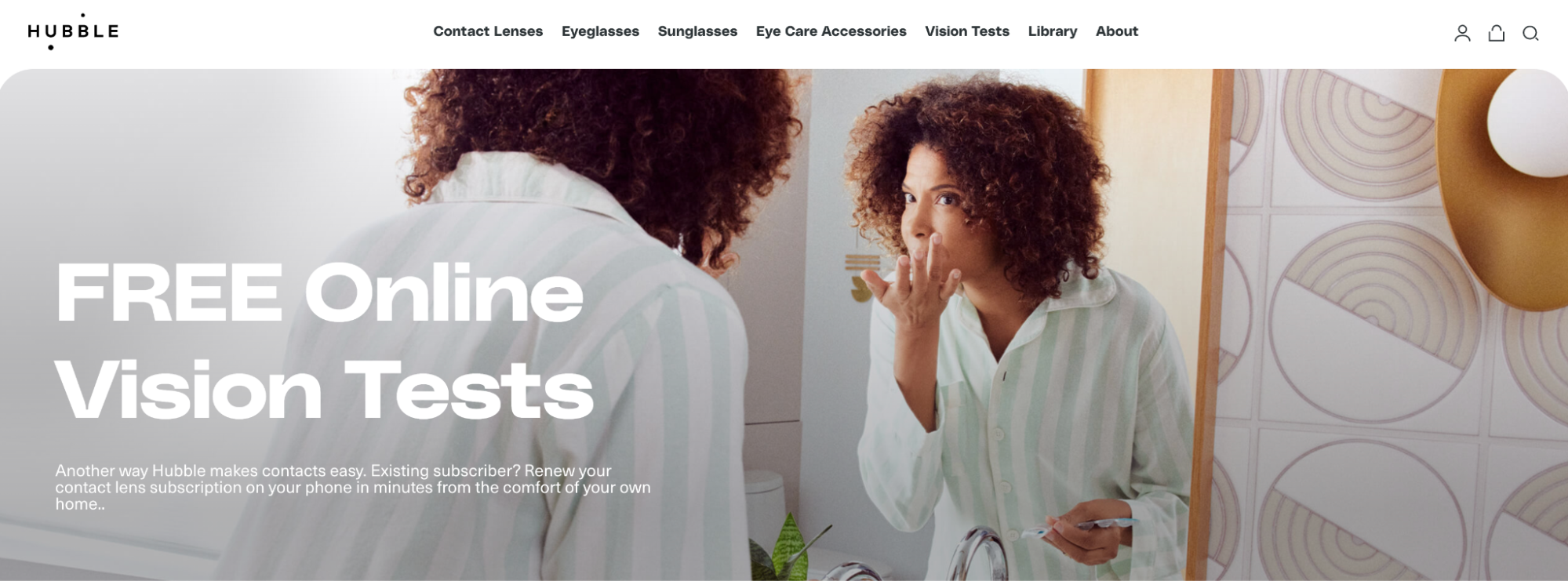
The free vision test lets customers check or renew a prescription, and positions Hubble as helpful. It also makes it easy to set up your account and get your prescription online so you can start a subscription. It further incentivizes reluctant shoppers by offering a starter pack of contacts for just $1, which can become a subscription.

Hubble makes it easy to set up your prescription and get the best lenses delivered to your door when you need them.
When your business is built on a recurring subscription model, your logistics need to be aligned on the backend. This includes multi-channel order management, keeping track of your stock, and fulfilling your order as efficiently as possible.
2. Thinx
A woman’s menstrual cycle is still a taboo subject. Everyone blushes a little when it comes to talking about it. Thinx is making everyone think positively about periods.
How is it doing this?
First, by sharing stories on its blog—aptly dubbed Periodical—about things everyone can relate to. It infuses posts with humor, puns (eggs are definitely a recurring theme), and lots of facts.
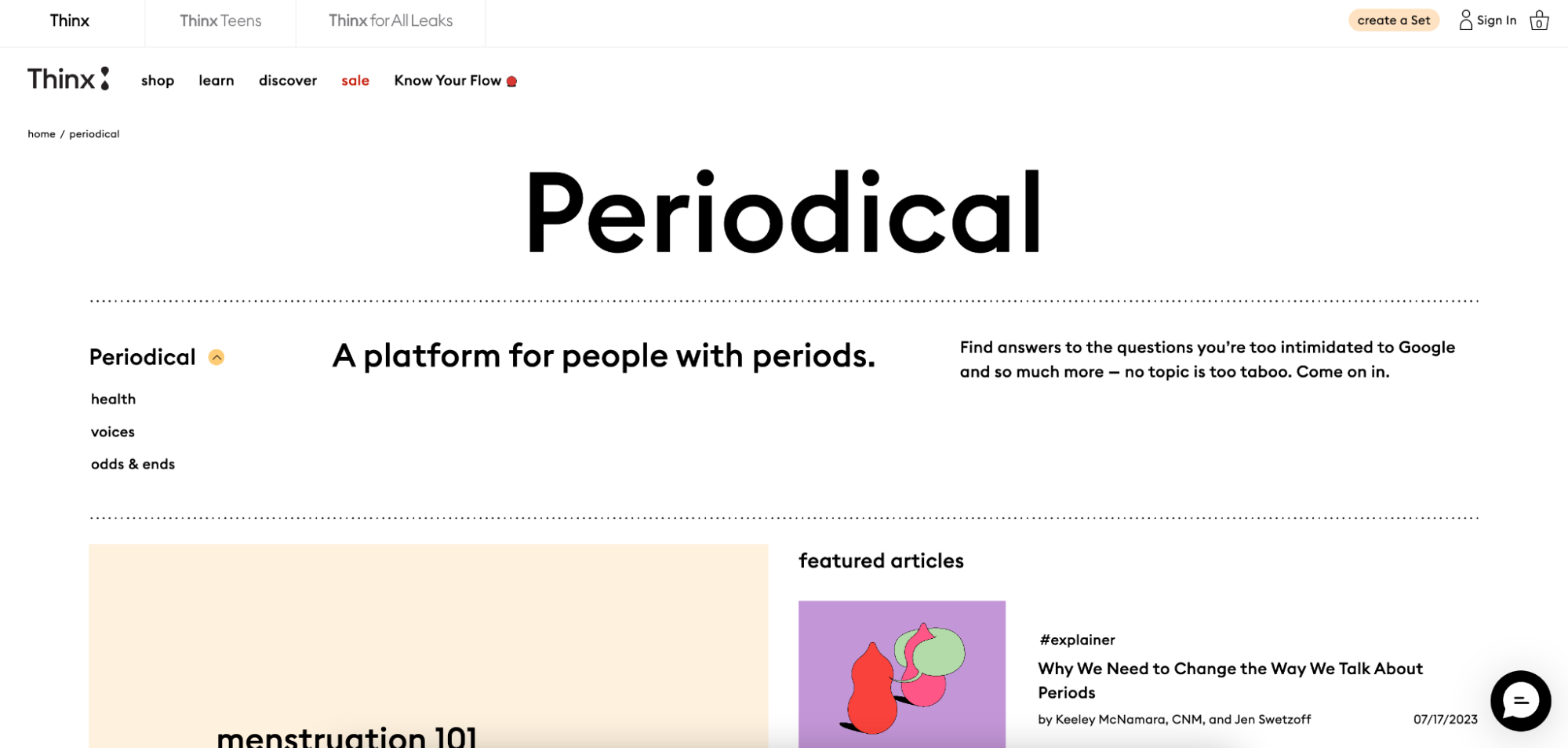
You’ll find a huge variety of stories, guest posts, rumor quelling, and myth busting on its blog.
Thinx also helps guide shoppers by putting detailed customer reviews on its product pages. Ratings and reviews should be collated in any health-based ecommerce business to establish trust.
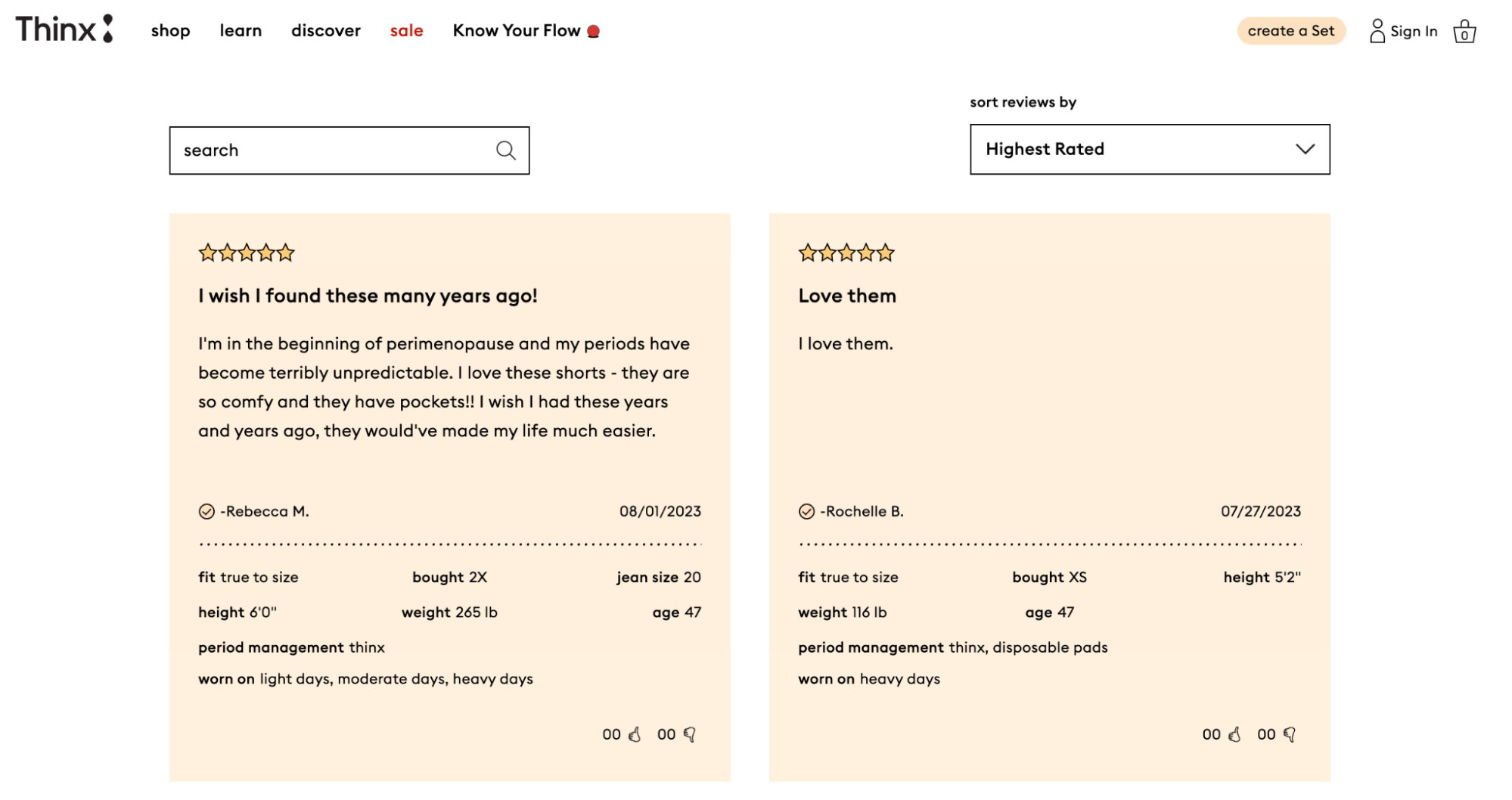
Thanks to their incredible influence on the topic, women all over the world are now sharing their stories with Thinx on social media—from TikTok videos about their experience to Instagram posts.
It’s a thing of beauty and it’s only just begun.
3. Dr. Axe
What sets Dr. Axe apart from other holistic, naturopathic, and health stores is the sheer amount of helpful information customers (new and existing) can get for free. It’s no wonder Dr. Axe is considered one of the top health influencers, with more than 2.23 million YouTube subscribers.
Dr. Axe’s ecommerce branch, Ancient Nutrition, sells whole food supplies from probiotics to collagen to support a healthy lifestyle. With its one-click upsell and Subscribe & Save plan, Dr. Axe has seen a 38% increase in customer lifetime value.
The way it works is simple: By subscribing to a regularly scheduled and recurring delivery for your product, you save 15% on your order, get free shipping, and get twice the rewards on dollars spent.

Dr. Axe’s one-click subscription shows customers how easily they can save by subscribing. It’s a win-win for both the business and the customer because the former receives a higher customer lifetime value, and the latter saves money and gets their favorite products replenished regularly.
4. 310 Nutrition
If there’s one thing we know about changing your eating habits, losing weight, and getting fit, it’s that it’s not easy. It takes a lot of hard work, dedication, and willpower. Even then, most people still fail.
What’s the secret ingredient to help people succeed, retain customers, and transform them into brand evangelists?
An international community to support you on the hard days and cheer for you on the good.
Based on this principle, 310 Nutrition created a robust community for those who use their products. To help you stay accountable, the 310 Community on Facebook offers its 408,000 members recipes, answers to questions from 310 Nutritionists, and comradery from other members.
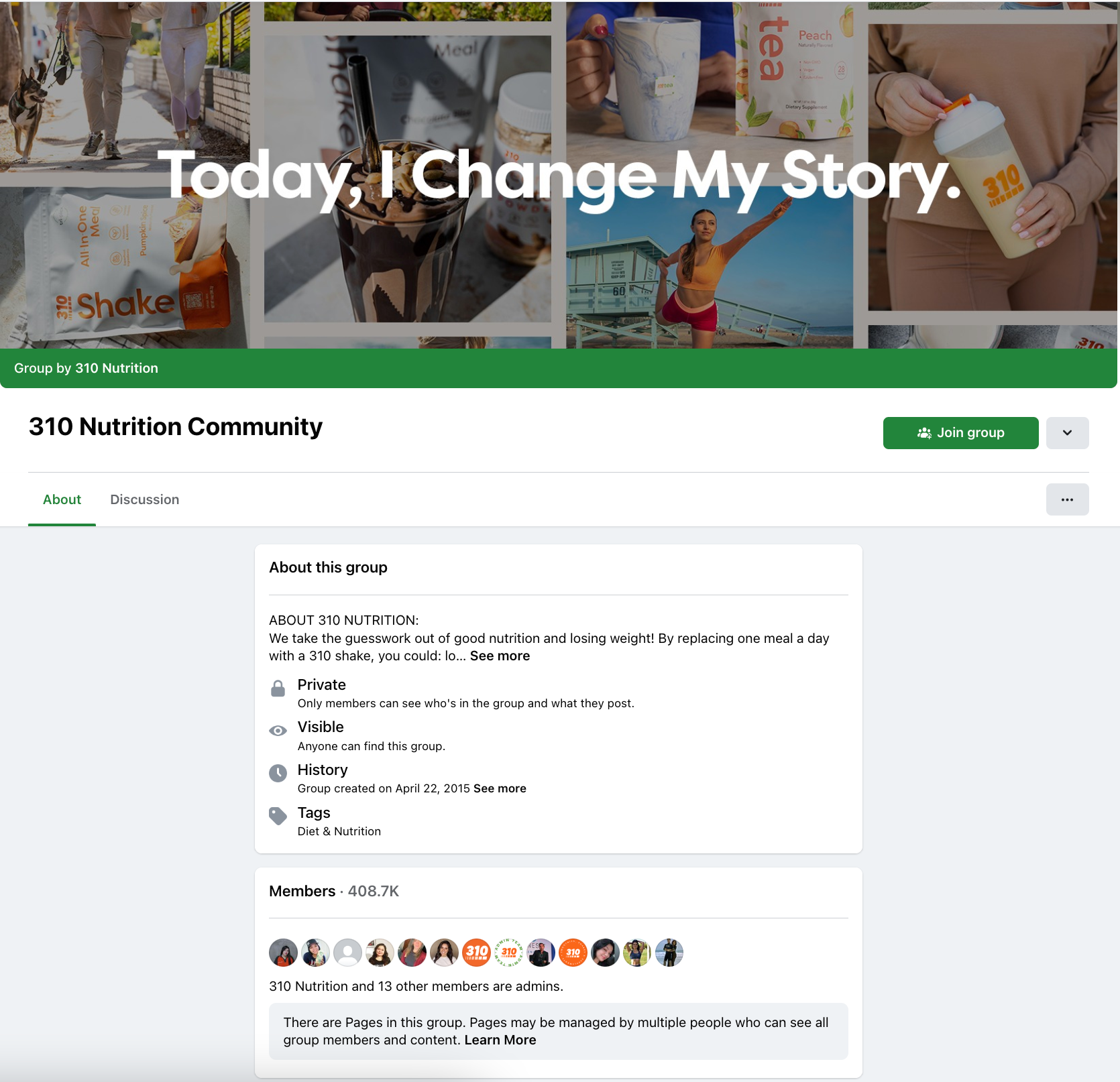
It leverages the community onsite through reviews and success stories as well as throughout user-generated content on social media.
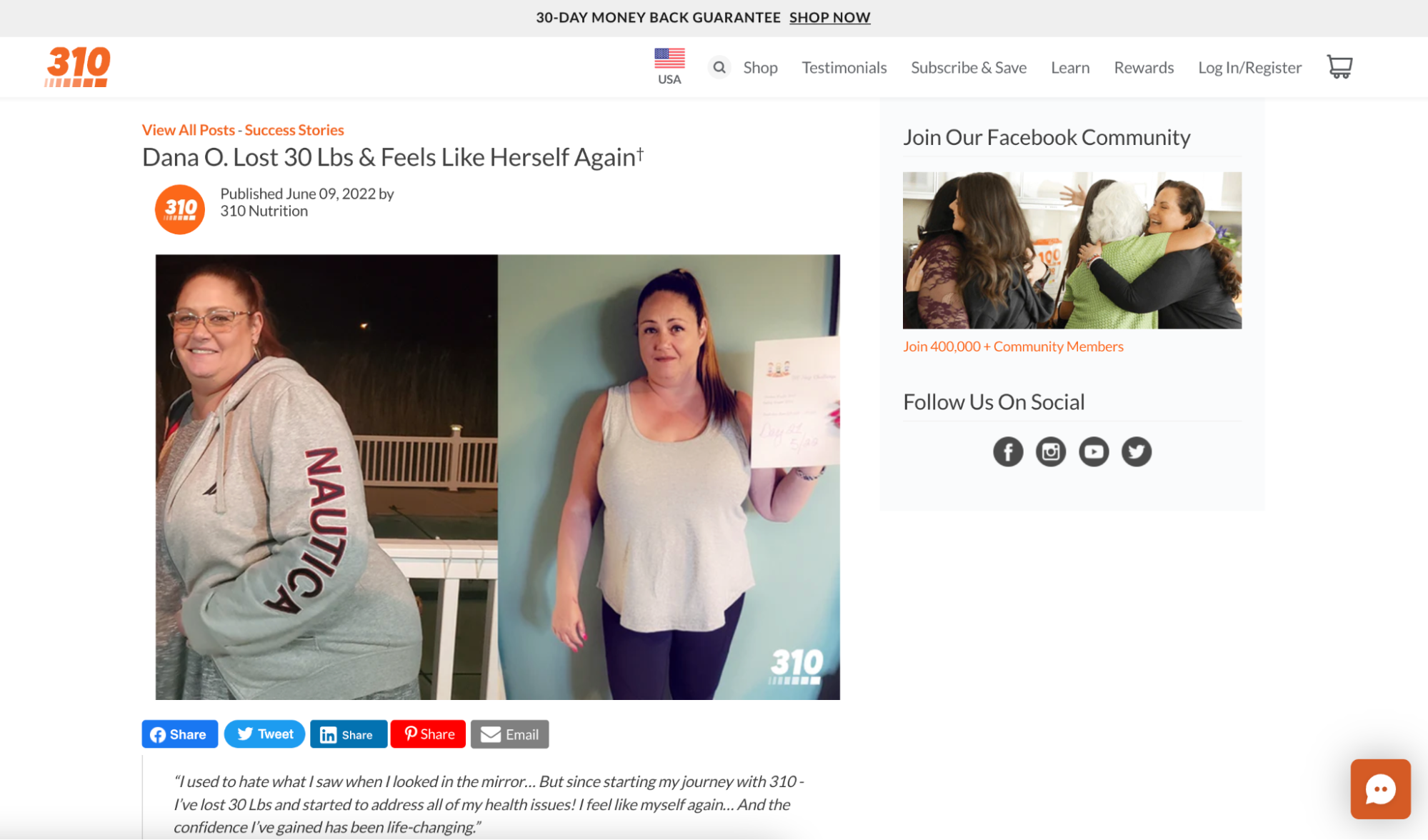
5. Blume
The global skin care market is valued at $104 billion, and is expected to grow by 6.21% by 2030. Companies like Blume are taking notice and reaping the rewards—by offering rewards.
Blumetopia, the brand’s loyalty program, lets customers earn Blume Bucks (BBs), which they can use whenever they shop. Blume uses Smile to run its loyalty and rewards program and increase sales.
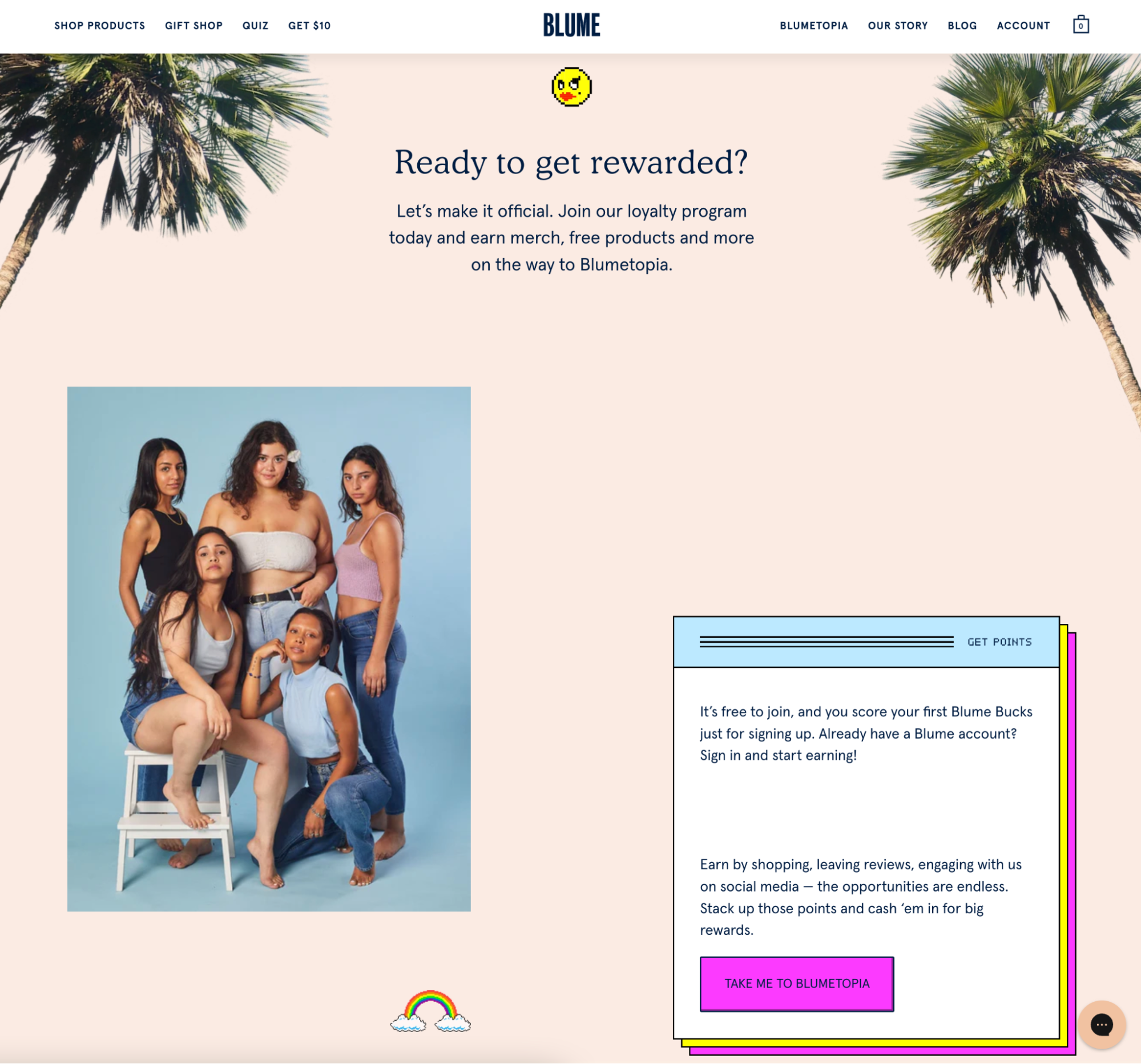
Earning BBs is pretty simple. Complete easy tasks like following Blume on social media, having a birthday, and even signing up for the program to collect points. Plus, the program is free to join, incentivizing customers to return and shop again.

Blumetopia also fosters a sense of community among Blume’s customers. By incentivizing engagement and providing exclusive access to special promotions, Blumetopia has proven to be a key tool in building brand loyalty and driving repeat purchases.
6. 100% Pure
100% Pure is not just the name of this ecommerce business, but its mission, its values, its guarantee, and its promise to customers as well.
It has a 100% guarantee (love it or return it for free), and it believes in 100% transparency with ingredients and processes. And it’s trying to minimize its footprint by running a sustainable business by using LED lights, 100% solar power, recycled packaging, vegan ingredients, and 100% biodegradable formulas.
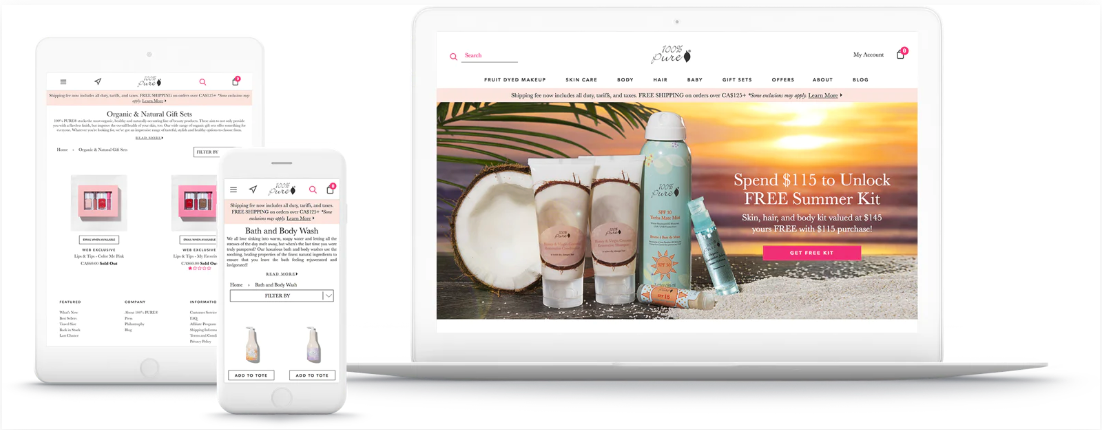
Along with a clean and natural branding, 100% Pure has harnessed automation to help prepare for sales and reduce repetitive, time-consuming tasks.
The brand used to manually prepare its websites before major sales and releases. Since using Launchpad, automation has saved the company 12 hours on average for each campaign, thus eliminating hundreds of hours of work each year. And the time savings translates into healthy growth—40% year over year.
For businesses ready to start automating repetitive and time-consuming tasks, the lesson is to have all your back-end systems in place first. 100% Pure has dozens of brick-and-mortar locations and ecommerce stores in 12 countries.
This means the business needs to be able to keep real-time tabs on inventory, product information, marketing resources, and more in order to fulfill all its customers’ orders.
By using the Shopify API, 100% Pure was able to create a custom tool allowing easy inventory syncing, product information, and everything else with one simple button click. It calls it the Purity Toolbox.
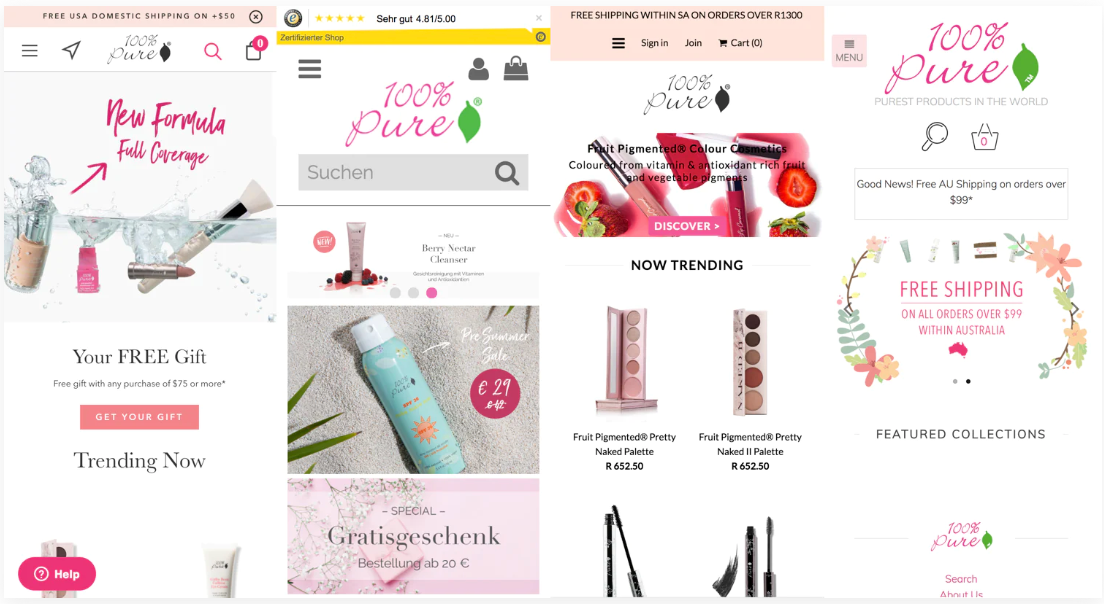
From left to right: 100% Pure’s storefronts in the US, Germany, South Africa, and Australia
7. BUBS Naturals
BUBS Naturals, a supplement and fitness product company named after U.S. Navy SEAL Glen "BUB" Doherty, is a big player in the nutrition and supplements world. Still, the growing company found it needed to adapt its advertising strategy and double down on its direct-to-consumer offerings.
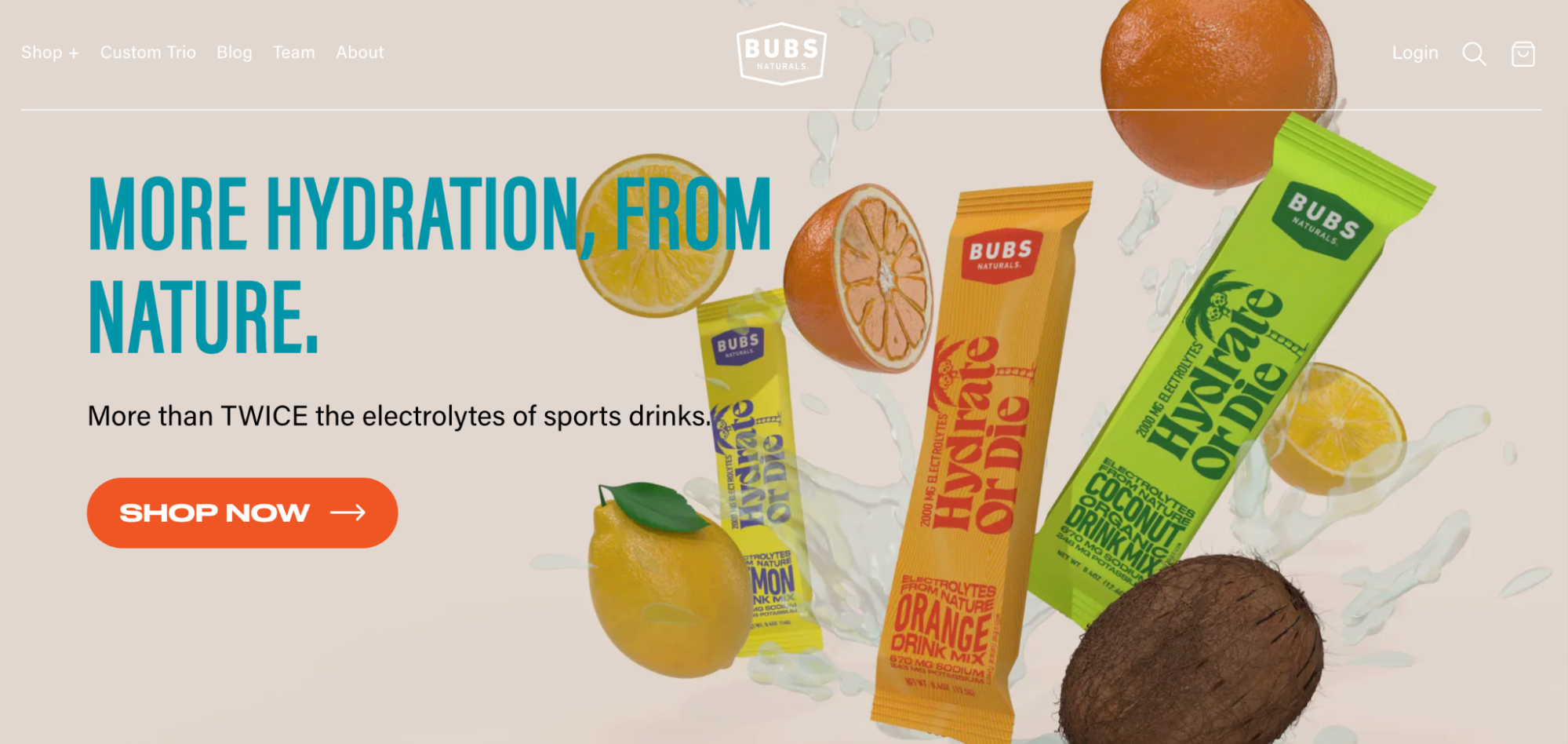
In highly competitive markets, like supplements, getting in front of the right audience is key. BUB Naturals used Shopify Audiences to enhance its customer acquisition efforts by generating high-intent audiences, thereby improving ad targeting and increasing the return on ad spend (ROAS).
After upgrading to Shopify Plus, the company also implemented automations, such as tiering discounts and disabling discount codes during large sales periods. The result was a 100% increase in conversion rate, a 10% increase in overall revenue from its direct-to-consumer site, and an 84% repeat customer rate. Upgrading to take advantage of new functionality allowed them to stay ahead of the curve and their competition.
8. Hiya
Hiya, a children’s wellness brand, offers a multivitamin with 15 essential vitamins and no added sugar.
Created by Darren Litt and Adam Gillman, two fathers who were alarmed by the questionable ingredients in conventional children’s vitamins, the company spent three years researching to create a natural chewable vitamin.
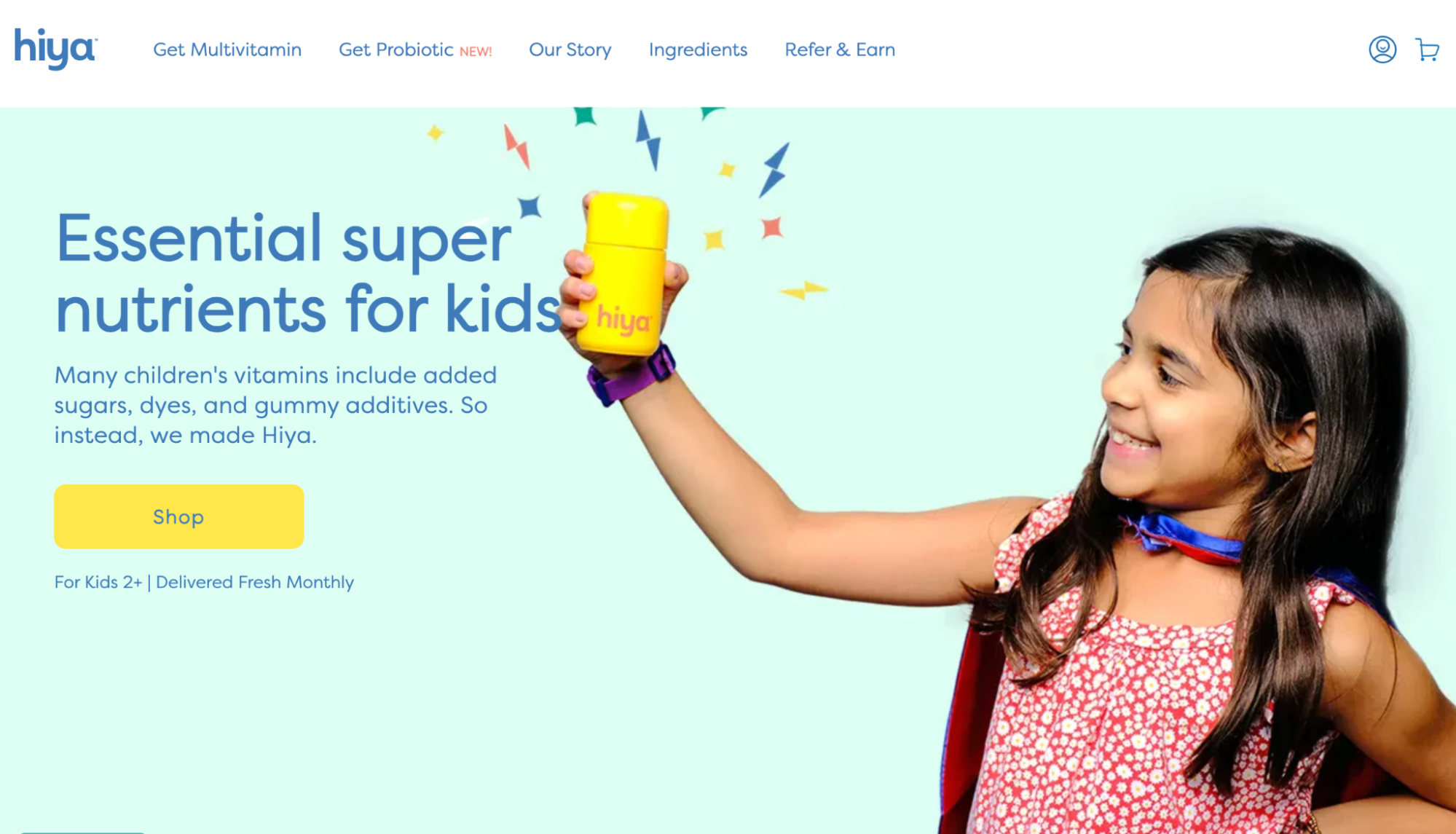
Their unique product found an audience of subscribers, but digital privacy changes impacted their ability to reach new customers, and increased acquisition costs. The company sought outside help from The Snow Agency, a Shopify Plus certified partner. The agency, known for its customized, performance-based strategies, onboarded Hiya to Shopify Audiences, aiming to reignite interest in the brand.
It was able to grow its reach with high-intent audiences—parents who want healthier options for their kids, and achieve a 172% higher return on ad spend (ROAS), plus a 158% increase in conversion rate.
Read: Hiya and The Snow Agency see 158% higher conversion with Shopify Audiences
Health and wellness ecommerce tips
Running a wellness brand in the ecommerce space? Keep the following tips in mind:
Guarantee product quality compliance
Ensure all products meet the regulatory standards in your market. Engage in rigorous testing, certifications, and clear labeling, especially for supplements and consumables, to build trust with your customers.
Create educational content
People looking for health and wellness products often seek guidance. Provide detailed information, tutorials, and educational content that help customers make informed choices. Ora Organic uses its blog to provide in-depth educational content, including fitness and food guides, all aimed at helping customers make informed choices.
Consider personalized wellness programs
Implement AI and data-driven tools to provide personalized wellness plans or product recommendations. Tailor offerings based on customers’ health goals, dietary needs, or specific medical conditions. Care/of offers personalized vitamin subscriptions. Customers take a quiz, and Care/of provides recommendations tailored to individual needs.
Add a mental and emotional wellness focus
Beyond physical health, consider products and content that support mental and emotional well-being. Collaborating with mental health experts can add credibility and depth to these offerings.
Promote community engagement and support
Build a community around your brand by hosting online forums, wellness challenges, or virtual classes. Encourage customers to share their wellness journeys and provide inspiration for others.
Create partnerships with health professionals
Collaborate with dieticians, personal trainers, therapists, or medical practitioners. These partnerships can lead to expert endorsements, product co-creation, or truly unique content.
Prioritize transparency and ethical sourcing
Clearly communicate the origin of your products, the ethical standards you uphold, and the sustainability practices you follow. Sakara Life offers plant-based meals and focuses on transparent sourcing, with detailed information on where its ingredients come from and its commitment to sustainability.
Run campaigns around seasonal and lifestyle consumers
Health and wellness needs vary by season and life stage. Create targeted marketing campaigns and product bundles that address specific seasonal needs (like immune support in winter) or life stages (like prenatal care.)
Make accessible wellness for all
Consider offering a range of products that cater to different budget constraints. Wellness should be accessible at various price points, and offering that can widen your customer base. Brandless, for example, maintains its commitment to offering a variety of health and wellness products at different prices, ensuring accessibility for all consumers.
Growing your wellness brand
When it comes to wellness marketing, your customers want to trust your brand more than anything.
That can mean building your know-like-trust with an encyclopedic-style website, being 100% transparent with what you do and how you do it, or empowering your customers to support themselves through your community.
However you choose to service your clientele, one thing is for certain: health and wellness consumers need to be supported with committed and consistent brands.
Get better ad performance with Shopify Audiences
Shopify Audiences helps you target your ads on Pinterest, Meta, and Google more effectively, with audience lists based on your products and buyer intent signals from your Shopify store data.
Health and wellness ecommerce FAQ
What are the health care ecommerce brands?
Some successful health and wellness ecommerce websites selling on Shopify are:
-
Hubble
-
Thinx
-
Dr. Axe
-
310 Nutrition
-
Blume
-
100% Pure
-
BUBS Naturals
-
Hiya
How do I sell health and wellness?
To sell health and wellness products, you have to identify a niche within the industry, ensure compliance with health regulations, find or create quality products, and implement a marketing strategy. You’ll have to decide if you want to open physical stores or sell online only (or both), and create a personalized shopping experience for customers to build trust and earn sales.
What is the fastest growing health and wellness company?
Some of the fastest growing health and wellness companies include Tabu, Care/of, Helix, and Eight Sleep.
Read more
- B2B Mobile Commerce: Everything You Need to Know
- Home Furnishing Ecommerce Sites: 15 Lessons from the Best in a $258B Market
- New York Fashion Week 2020 Trends: Sustainability, Made-to-Order and Off-Runway
- Direct-to-Consumer Business Model in CPG: How-To Guide for Brand Managers
- Augmented Reality in Commerce
- Social Commerce Strategy: Improve Your Social Selling With These 9 Best Practices
- The Giving Economy: How Consumers Are Paying It Forward to Retailers
- Choosing Between Headless Commerce vs Traditional Commerce
- How Luxury Fashion Is Embracing Inclusive Sizing
- Sustainable Packaging Examples in Beauty, Fashion, Food, and Home Goods
